1. It Can Run Up to 20 Miles Per Hour
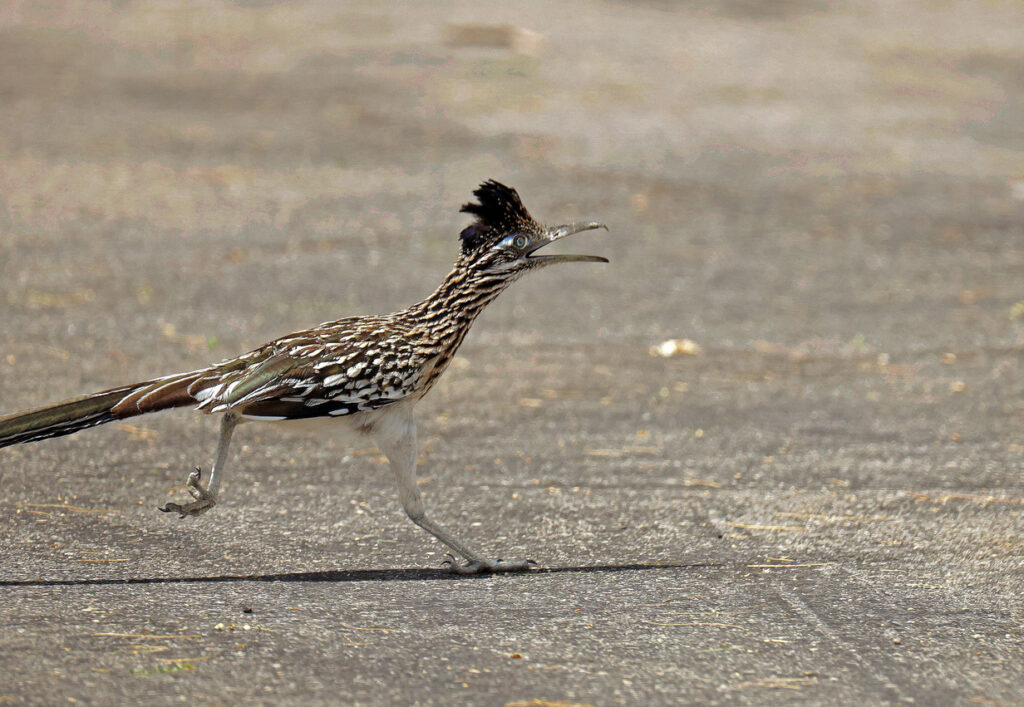
Forget Wile E. Coyote—real roadrunners are speedsters that can sprint up to 20 mph, making them the Usain Bolts of the bird world. While they’re technically part of the cuckoo family, there’s nothing cuckoo about their cardio. They prefer running over flying, and their legs are so strong they look like tiny velociraptors zipping through the scrub. This ground game isn’t just for show, they use it to chase down prey like lizards, snakes, and even other birds. Yes, they hunt at high speeds, which is equal parts impressive and mildly terrifying. If you thought chickens were intense, wait until you meet their turbocharged cousin with an attitude. Source: Wikipedia
2. It Eats Rattlesnakes for Breakfast (Literally)
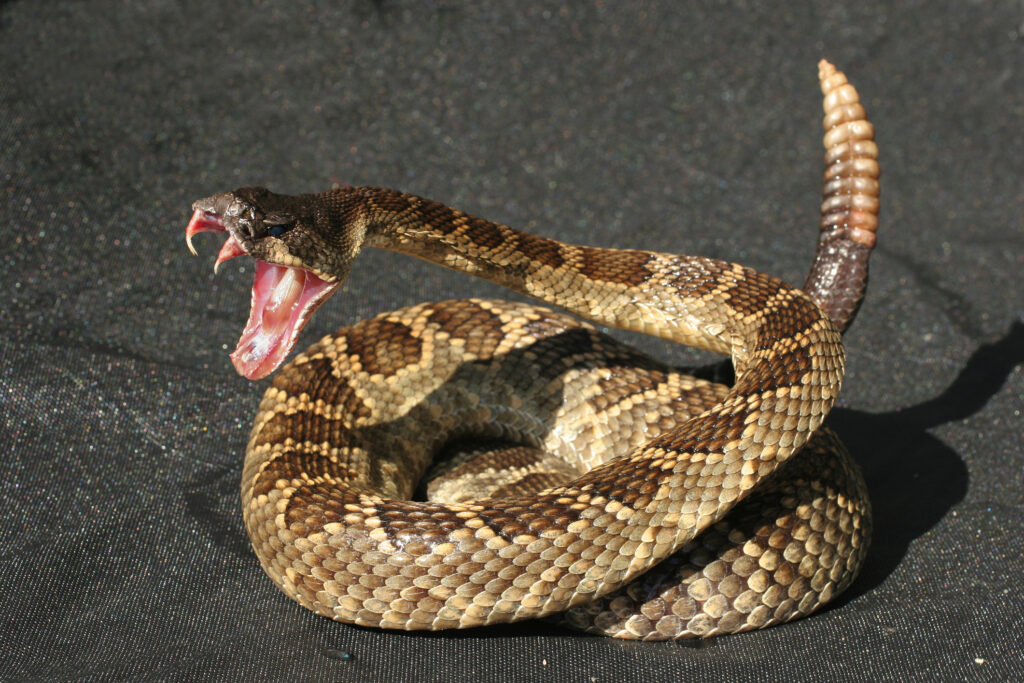
The roadrunner isn’t just fast, it’s a desert ninja with a taste for danger. These birds are known to take on venomous snakes, including rattlers, using quick reflexes and a whole lot of nerve. They’ll dodge strikes, peck the snake’s head repeatedly to stun it, and then swallow it whole like it’s a spicy noodle. Scientists have watched them work in pairs—one bird distracts the snake while the other goes in for the kill, like a feathery tag-team wrestling match. It’s impressive, slightly disturbing, and very on-brand for a bird that doesn’t back down from anything. Moral of the story: don’t mess with something that treats venom like seasoning. Source: Animalia
3. They Don’t Need Much Water
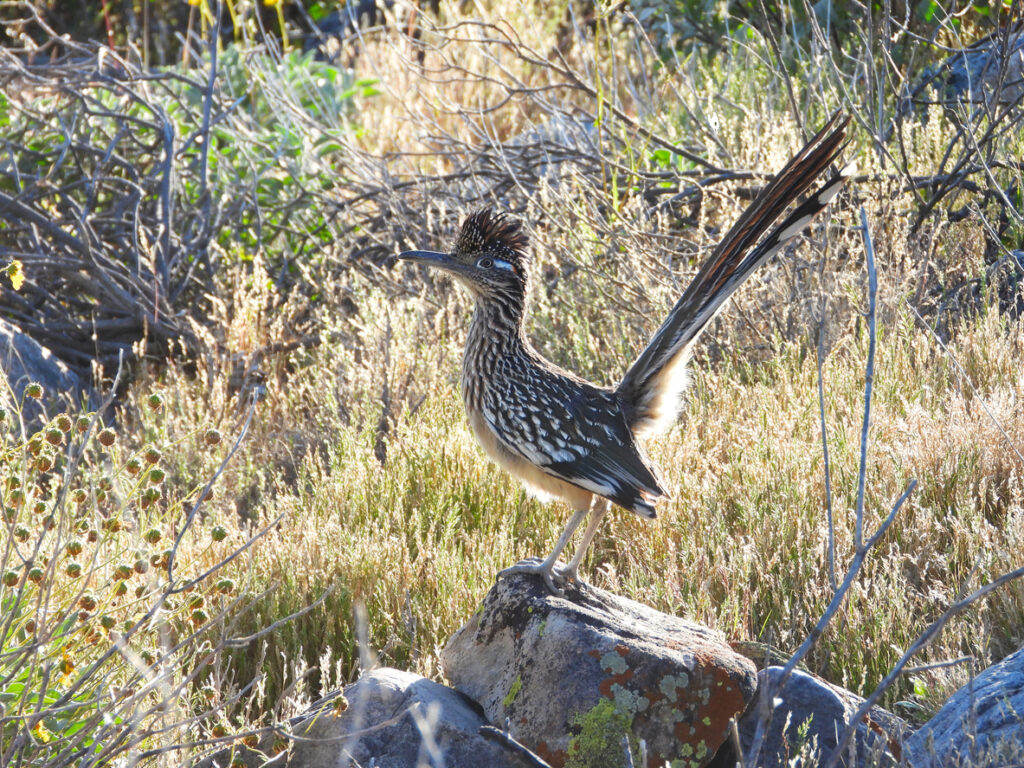
Living in the scorching heat of the southwestern U.S. and Mexico, roadrunners have adapted to survive on minimal water. They get most of their hydration from the food they eat, which includes insects, small mammals, reptiles, and the occasional fruit if they’re feeling fancy. To conserve moisture, they excrete salt through special glands near their eyes, which means they sweat through their faces—how glamorous. Unlike many birds, they can go long stretches without drinking, because their bodies are pros at keeping every drop. Think of them as the desert’s feathered survivalists, thriving where most creatures melt. When it comes to hydration, they sip smarter, not harder. Source: NWF
4. That Crest Isn’t Just for Style—It’s Desert Drama in Feathers
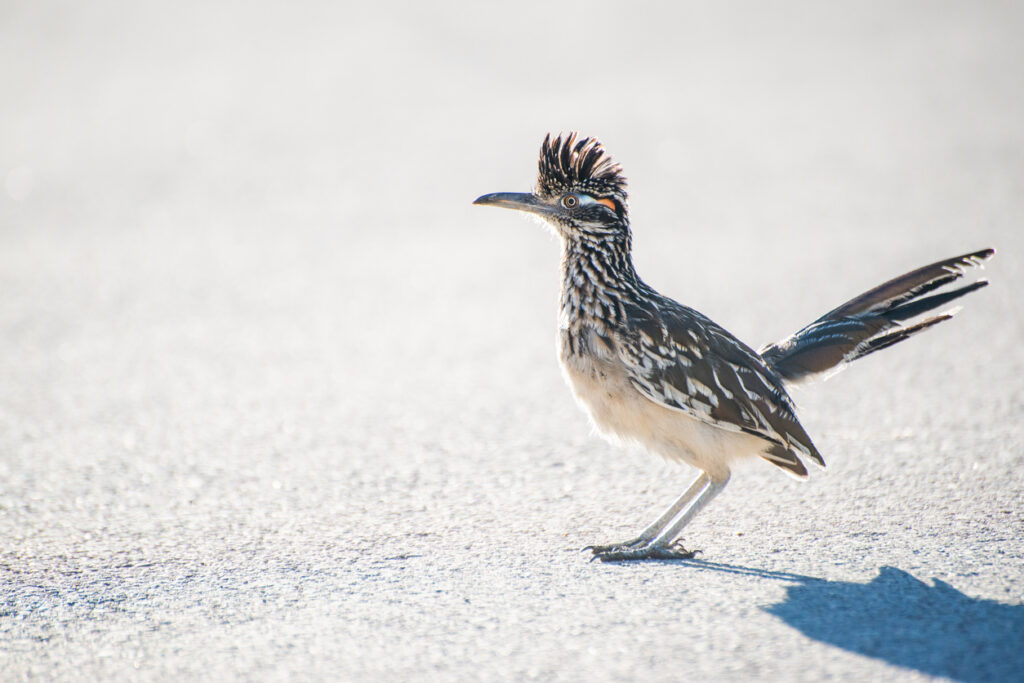
That funky crest on a roadrunner’s head isn’t just a fashion statement—it’s a mood signal in motion. While not officially proven to function like a feathered emoji, bird experts have observed that roadrunners raise and lower their crest in response to excitement, alertness, or curiosity. Spotting a rival? Crest up. Just relaxing in the sun? Crest down. It’s a subtle communication tool, likely used for visual cues between birds and possibly even to startle prey. While it doesn’t serve a proven thermoregulation purpose, it definitely helps the roadrunner serve face in the desert. Think of it as a feathered eyebrow that says, “Don’t mess unless you want to be pecked.”
5. You Can Spot Them in the Southwest
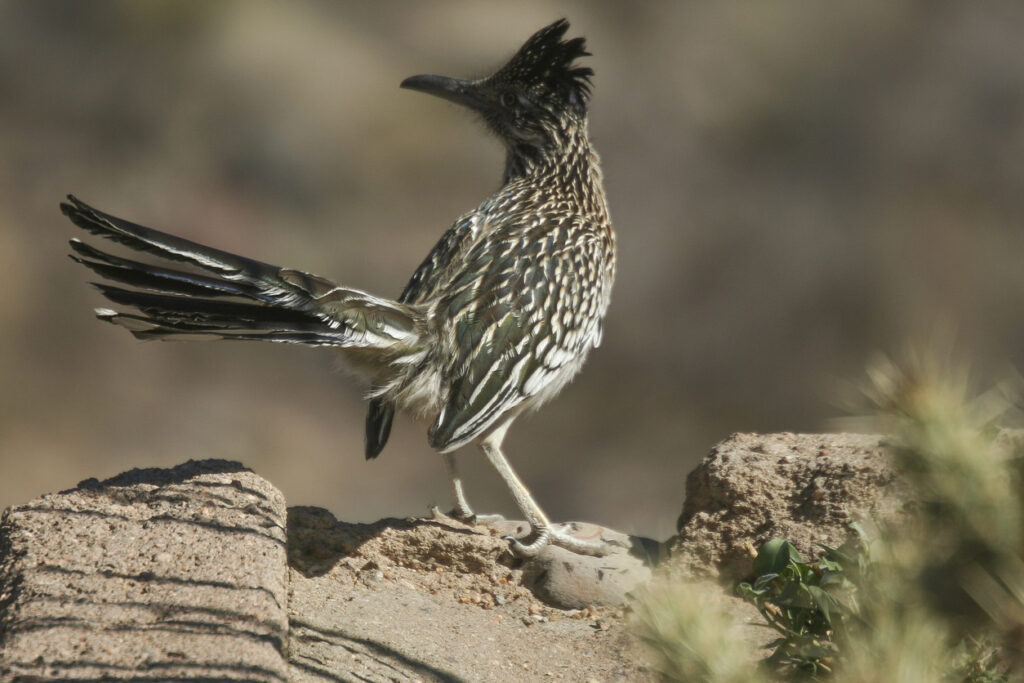
If you’re roaming through the deserts of Arizona, New Mexico, Texas, or even southern California, keep your eyes peeled—you might catch a roadrunner darting across the road (fitting, right?). These birds thrive in arid, scrubby environments like deserts, canyons, and dry grasslands, often zipping through open areas in search of lunch. They don’t love people, but they’re not shy either—you’ll sometimes see them cruising along hiking trails or trotting through suburban yards like they own the block. National parks like Saguaro, Big Bend, and Joshua Tree are all solid roadrunner territory. If you see a blur with a mohawk and attitude, congratulations, you’ve just met the region’s most iconic speed freak. Just don’t expect a selfie—they’re fast and fiercely camera-shy.
6. They Make the Strangest Sounds—And Nope, It’s Not “Beep Beep”
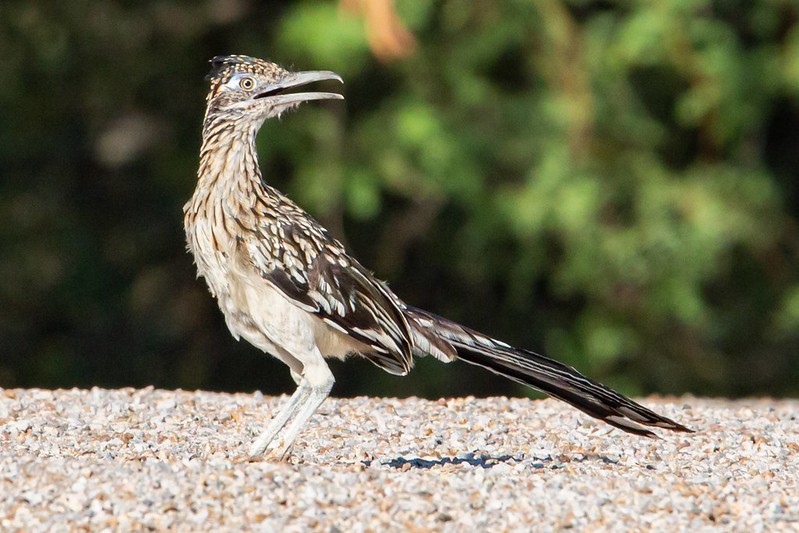
Real roadrunners do not go “beep beep”—sorry, Looney Tunes fans. Instead, they make a mix of coos, clacks, and low-frequency dove-like calls that sound more haunted house than highway chase. They also rattle their beaks and emit soft warbles, which they use to communicate with mates and mark territory. During breeding season, males let out a deep coo that can travel long distances—it’s their sexy desert love song. If you’re expecting cartoon noises, you’ll be wildly disappointed, but if you enjoy spooky bird calls echoing across the desert? You’re in luck. Honestly, they sound more like something you’d hear in a horror podcast than Saturday morning cartoons.
7. They Sunbathe Like Little Desert Vampires
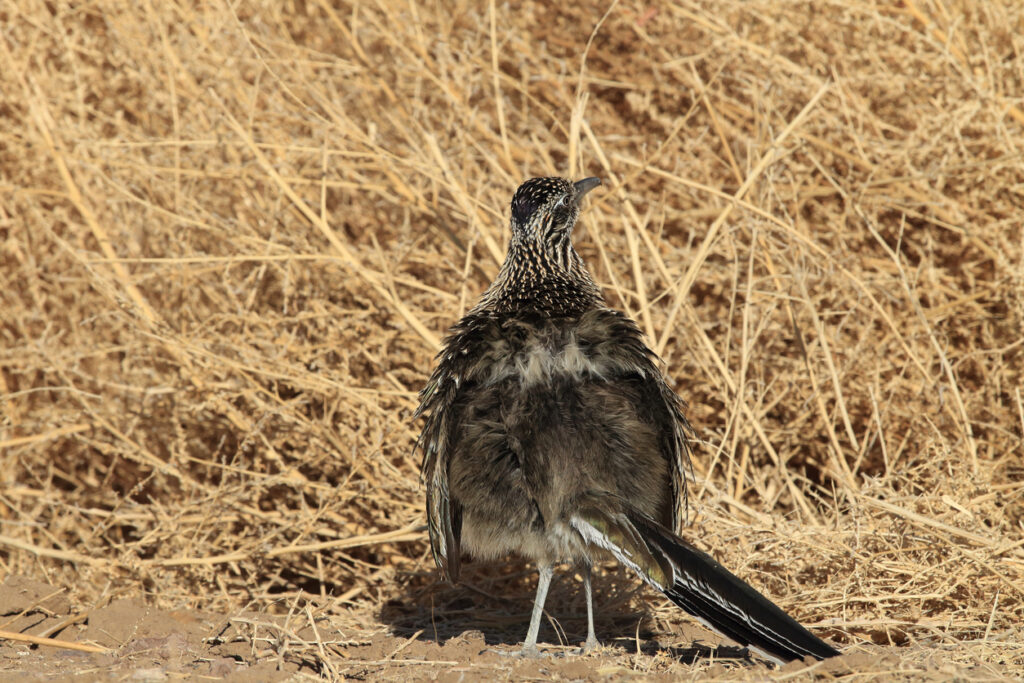
One of the weirder things about roadrunners? They love to sunbathe, but in the most dramatic way possible. Early in the morning, they’ll turn their backs to the sun, fluff their feathers out, and expose a patch of black skin between their wings to absorb heat. They look like goth pigeons charging their solar panels, and it’s both hilarious and slightly creepy. This is their way of warming up after cold desert nights, since they can’t store body heat like mammals do. You might spot one perched on a rock or fence, wings spread, eyes half-closed, living its best lizard-life fantasy. It’s less about relaxation and more about thermoregulation, but they make it look fabulous.
8. They’re Surprisingly Romantic—With a Side of Weird
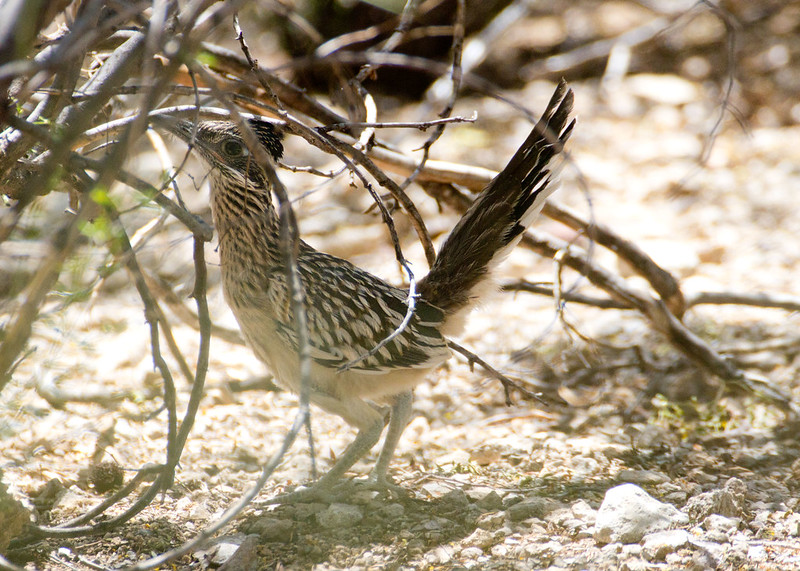
Roadrunners mate for life (aww), and they’ve got some pretty quirky courtship moves. Males will chase females around while carrying gifts like insects, lizards, or the occasional flower (if that’s not love, what is?). Then comes the bowing, puffing, tail-fanning performance that says, “Hey girl, look at this snake I caught just for you.” Once paired, couples reinforce their bond by grooming each other and cooing softly like desert lovebirds. They even build nests together, raising their chicks as a tiny, fast-footed team. It’s unexpectedly wholesome—like a speed-dating success story that actually worked.
9. Baby Roadrunners Are Born to Run (Sort Of)
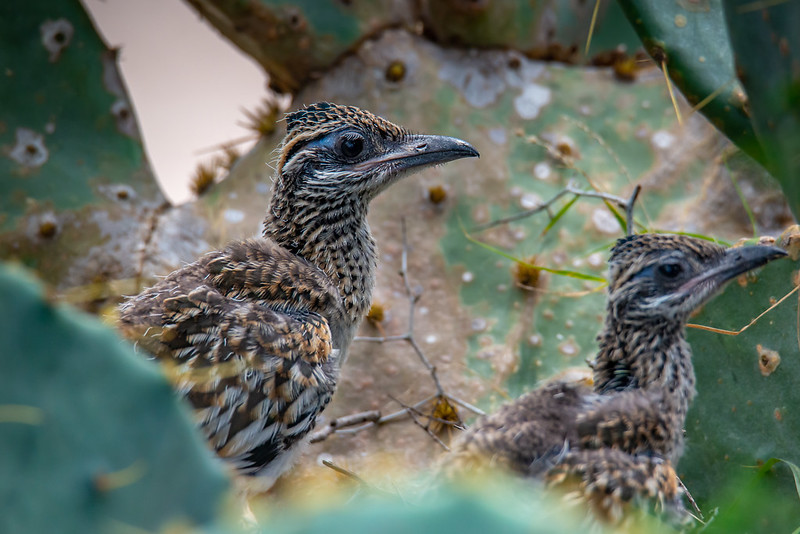
Roadrunner chicks don’t stay cute and helpless for long—they’re up and sprinting within a few days of hatching. Raised in nests tucked into cacti or shrubs, these little fuzzballs are fed a high-protein diet of bugs and tiny reptiles, courtesy of their tireless parents. By the time they’re three weeks old, they’re already out of the nest practicing their signature moves, like darting, leaping, and tail-wagging with serious attitude. They grow fast because desert life isn’t exactly forgiving, and being able to outrun danger is a matter of survival. So while other birds are still learning how to fly, baby roadrunners are training for the Desert Olympics. Call it tough love—with feathers.
10. They’ve Got Built-In GPS
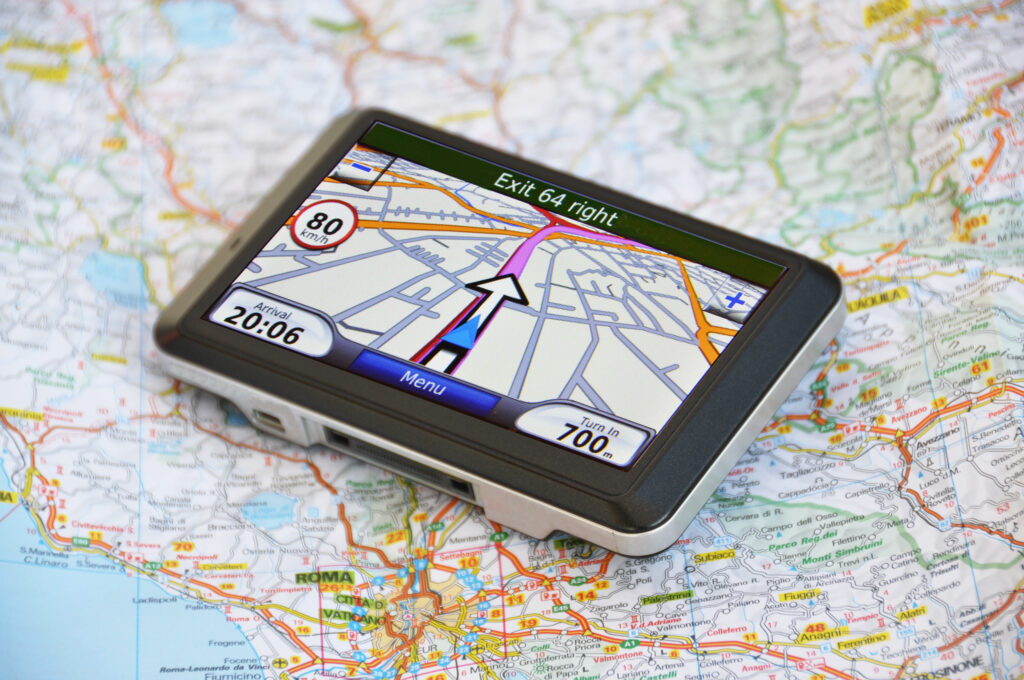
Roadrunners are territorial and know their patch of land like the back of their scaly feet. They’ll patrol several acres daily, following the same network of trails and shortcuts with the precision of a GPS system on caffeine. Scientists believe they develop mental maps of their environment, remembering the best spots for hunting, sunbathing, and nesting. This mental mapping is so good, they can escape predators by zigzagging through familiar routes and ducking into cover at just the right moment. It’s part instinct, part memory, and 100% impressive. Basically, you can’t out-navigate a roadrunner on its home turf—it’s the original off-road expert.


